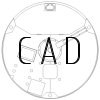Air cleaners for the Tiger
The Tiger's engine, in the tank's original design, drew its combustion air through openings on the engine compartment hatch. But the oil-bath air filters mounted on the engine were deemed inadequate for dusty conditions. Starting with the Tigers sent to Tunisia, two external air precleaners were provided with all new Tigers. The units were removable and in many environments the crews did not attach them. The precleaner system was called "Feifel".
Parts of the Feifel system
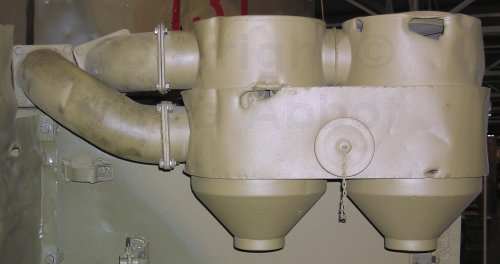
This photo shows one of the two Feifel filters of a Tiger (in Bovington Museum). It has been damaged, including battle damage from 1943. Two caps are missing from the bottom. The small cap and its chain are not originals.
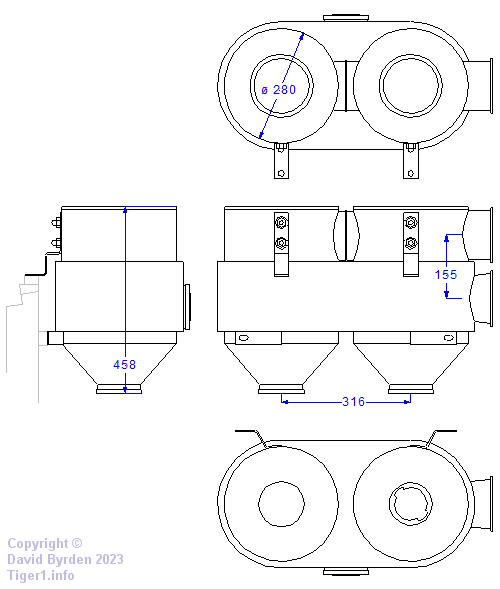
This diagram shows a Feifel filter unit as originally designed. The units were attached to the rear armour wall by 4 bolts.
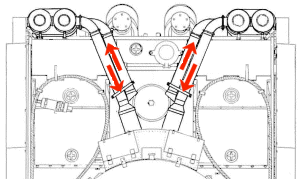
To use the Feifel system, you would screw down the large round air intake cover in the middle of the engine hatch [3, see 3.4.1.11] . The only opening in the hatch would then be the rectangular slot toward the front. Tigers with the Feifel system had a large V-shaped duct attached there, rather than the old box-shaped cover. If the Feifel system was not already attached, you would snap two flexible metal trunks onto the V-duct, bolted to the filter units at their other end. Two more ducts ran back from the filters to the middle of the engine deck. Their open ends were covered by a fine mesh.
The reason why the V-duct was placed at the front of the engine hatch, instead of the rear, was that the Henschel designers originally wanted to continue the ducting inside the engine compartment and directly connect it to the air intake duct at the front of the engine. But this internal Feifel duct was never produced.
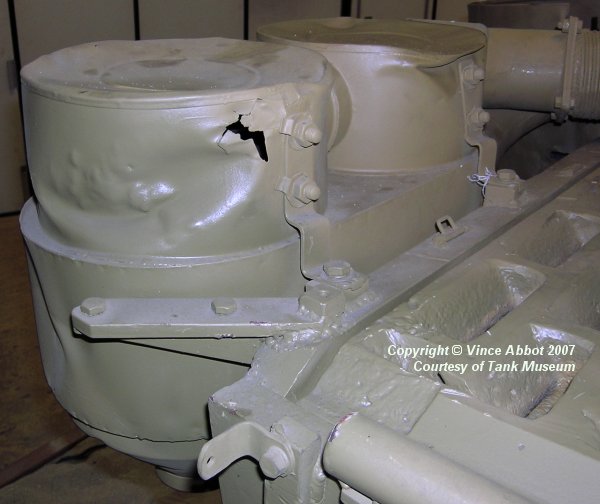

Each filter unit was attached to the hull wall at 4 points. In this photo we can see two of them. The long support arm in the foreground is from the S-mine system.
The cyclone cylinders
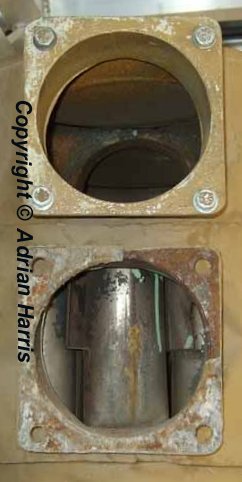
Here we can see into a Feifel filter. Internal partitions divide it into two upper chambers, a middle chamber, and two conical bins underneath. The upper chambers are empty; we can see the tube that links them.
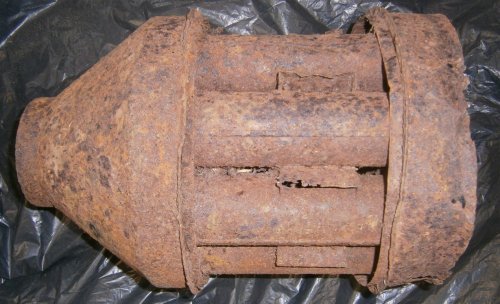
The middle chamber contains 18 vertical tubes; they are the cyclone cylinders. This is part of a Feifel filter recovered from the ground. The cylinders connect the upper chamber (on our right) to the bin. Each cylinder has a small rectangular intake on its side.
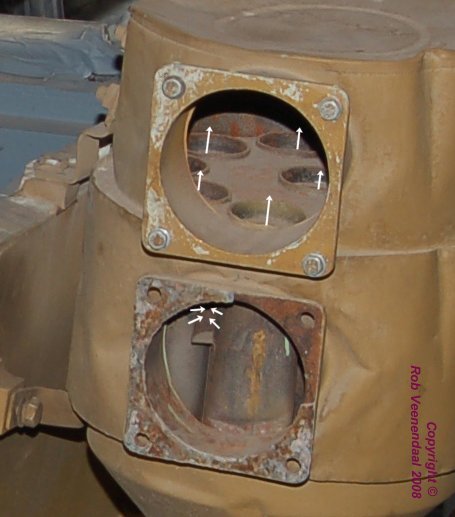
On this photo I have marked the airflow. Dusty air enters each cylinder through the intake. The shape of a cylinder induces the air to spin inside it. Cleaned air emerges from the top of the cylinder while dust falls out of the bottom.
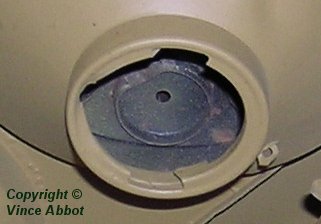
This is a view from below. Thanks to the missing cap (which was attached by a chain) we can see the bottom of a cyclone tube. The dust emerges through a small hole; presumably there is an internal funnel leading to it.
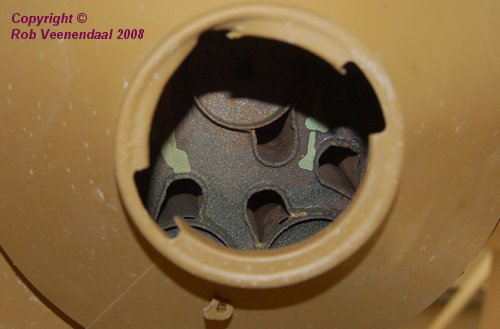
There is an as-yet-unanswered question regarding these cyclone cylinders. Each one has a duct at the bottom, as you can see here. The shape of these ducts suggests to me that they inject clean air into the tube, above the funnel. This is a standard technique to prevent erosion of the cylinder walls. But I have no further images of these ducts.
Note also a tiny hole in the side of the filter cylinder, probably for draining water from this submersible vehicle.
The second type of Feifels
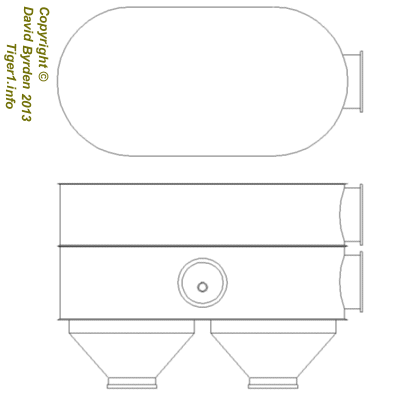
The design of the Feifel units was simplified in March 1943. This diagram shows the new design. There is now a single upper compartment. The middle compartment has the same height as before, so the cyclone filters are probably unchanged.
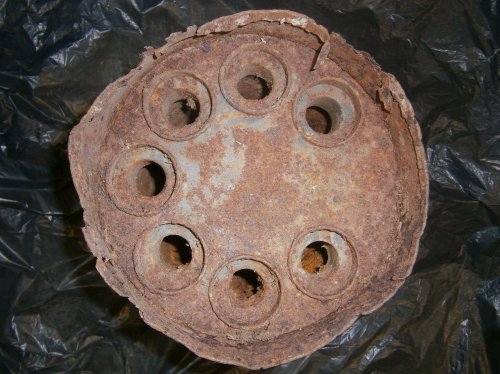
The second type of Feifel filter apparently had 14 rather than 18 cyclone tubes. This is the top of the rusted part already seen. The designers have blanked off 2 cyclone positions without moving the rest. I can only guess that this change was made when the overall redesign happened.
The end of the Feifels
The precleaner system was dropped completely from production in October 1943. The welded mounting points on the hull rear plate were still provided on new Tigers for about three more months [3, see 3.4.1.11] .
[1] Survey of Tiger 250122, at Bovington museum, by David Byrden
[2] Survey of Tiger 250122, at Bovington, by Hilary Louis Doyle
